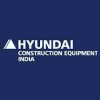Filter interviews by
KK Spun Pipes Engineer Trainee Interview Questions and Answers for Experienced
KK Spun Pipes Engineer Trainee Interview Experiences for Experienced
1 interview found
I applied via Referral and was interviewed in Oct 2019. There was 1 interview round.
Interview Questionnaire
2 Questions
- Q1. How many cement bag in 1cu mtr?
- Ans.
The number of cement bags in 1 cubic meter varies depending on the density of the cement.
The density of cement can range from 1440 to 1840 kg/m^3.
Assuming a density of 1500 kg/m^3, approximately 200 bags of cement would be needed for 1 cubic meter.
To calculate the exact number of bags, divide the density of the cement by the weight of one bag.
- Q2. How many bricks in 1cu mtr
- Ans.
The number of bricks in 1 cubic meter varies depending on the size of the bricks.
The size of the bricks affects the number of bricks in 1 cubic meter.
Different brick sizes result in different brick quantities.
To determine the number of bricks, we need to know the dimensions of the bricks.
Interview Preparation Tips
Top trending discussions






Interview questions from similar companies

Senior Engineer Interview Questions & Answers
Hyundai Construction Equipmentposted on 9 Sep 2021
I applied via Referral and was interviewed in Mar 2021. There were 3 interview rounds.
Interview Questionnaire
2 Questions
- Q1. About Process related to Assembly line
- Q2. Details of assembly line sequence
- Ans.
The assembly line sequence involves a step-by-step process of assembling parts to create a final product.
The process starts with the arrival of raw materials
Parts are then assembled in a specific order
Quality checks are performed at various stages
The final product is packaged and shipped
Efficiency and safety are key considerations throughout the process
Interview Preparation Tips

Service Engineer Interview Questions & Answers
Putzmeister Concrete Machinesposted on 14 May 2022
I applied via Approached by Company and was interviewed before May 2021. There was 1 interview round.
(1 Question)
- Q1. Basic hydraulic symbols
Interview Preparation Tips
No any career growth once joined this company
Interview process is basic hydraulic symbols only.

I applied via Naukri.com and was interviewed before Apr 2021. There were 2 interview rounds.
(1 Question)
- Q1. Basics Hydraulics, Basic electrical, Sensors, PLC
(8 Questions)
- Q1. What are your strengths and weaknesses?
- Q2. Why are you looking for a change?
- Q3. Why should we hire you?
- Q4. What are your salary expectations?
- Q5. What is your family background?
- Q6. Share details of your previous job.
- Q7. Where do you see yourself in 5 years?
- Q8. Tell me about yourself.
Interview Preparation Tips
- Hydraulics

Interview Questionnaire
5 Questions
- Q1. Tell me about yourself?
- Ans.
I am a Service Engineer with expertise in troubleshooting and repairing complex machinery.
Experienced in diagnosing and resolving technical issues in industrial equipment
Proficient in using diagnostic tools and software to identify problems
Skilled in performing maintenance and repairs on various types of machinery
Strong problem-solving and communication skills
Ability to work independently and under pressure
Example: Suc...
- Q2. Why hydraulics Ram has different speed in head side and rod Side?
- Ans.
The speed difference in a hydraulic ram is due to the difference in effective areas on the head side and rod side.
The head side of the ram has a larger effective area, resulting in slower speed.
The rod side of the ram has a smaller effective area, resulting in faster speed.
This speed difference is a result of the hydraulic pressure acting on different areas.
The speed ratio between the head side and rod side can be calc...
- Q3. What is the purpose of pressure relief valve?
- Ans.
A pressure relief valve is used to protect equipment and systems from excessive pressure by releasing the pressure when it exceeds a certain limit.
Prevents damage to equipment and systems
Ensures safety of personnel
Maintains system integrity
Prevents explosions or ruptures
Relieves excess pressure by opening and releasing fluid or gas
Commonly used in boilers, pressure vessels, pipelines, and hydraulic systems
- Q4. What is orifice?
- Ans.
An orifice is a small opening or hole through which fluid or gas can flow.
Orifices are commonly used in various industries, such as plumbing, engineering, and manufacturing.
They are often used to control the flow rate of fluids or gases.
Orifices can be found in devices like nozzles, valves, and flow meters.
The size of an orifice determines the flow rate and pressure drop across it.
Examples of orifices include the tiny ...
- Q5. Why you looking for a job change?
- Ans.
I am looking for a job change to explore new opportunities and challenges.
Seeking career growth and advancement
Wanting to work in a different industry or with different technologies
Desire for a better work-life balance
Relocation or proximity to family
Unsatisfactory current job situation
Interview Preparation Tips
And the technical round is very simple as always. It consists of mainly Basics.
So don't worry...!!
Best of Luck...!!

I applied via Naukri.com and was interviewed before May 2018. There were 5 interview rounds.
Interview Questionnaire
4 Questions
- Q1. Explain about open loop & close loop operation in hydraulic system.
- Ans.
Open loop and closed loop are two modes of operation in hydraulic systems.
Open loop operation: The hydraulic system operates without feedback control. The output is not adjusted based on the system's performance.
Closed loop operation: The hydraulic system uses feedback control to adjust the output based on the system's performance.
Open loop systems are simpler and less expensive, but they lack precision and accuracy.
Cl...
- Q2. Explain about Starting circuit.
- Ans.
The starting circuit is responsible for initiating the engine's operation.
The starting circuit consists of components such as the battery, starter motor, ignition switch, and solenoid.
When the ignition switch is turned on, it sends a signal to the solenoid, which then engages the starter motor.
The starter motor uses electrical energy from the battery to turn the engine's crankshaft, starting the combustion process.
Once...
- Q3. Why should we hire you ?
- Ans.
I am a highly skilled and experienced service engineer with a proven track record of successfully troubleshooting and resolving complex technical issues.
I have a strong technical background and extensive experience in diagnosing and repairing equipment.
I am a quick learner and can adapt to new technologies and processes easily.
I have excellent communication skills and can effectively communicate with customers and team...
- Q4. What is your core values ?
- Ans.
My core values include integrity, accountability, and continuous learning.
Integrity: I believe in always doing the right thing, even when no one is watching.
Accountability: I take ownership of my actions and responsibilities.
Continuous learning: I strive to constantly improve my skills and knowledge.
Example: I once discovered a mistake in a project I was working on, and instead of ignoring it, I took responsibility and...
Interview Preparation Tips
Experience: Questions based upon technical knowledge like engine, basic electrical & basic hydraulics.
General Tips: You should have deep knowledge about hydraulics system & DC electrics.
Skills: Communication, Body Language, Problem Solving, Analytical Skills, Leadership, Presentation Skills, Time Management, Decision Making Skills
Duration: 1-3 Months

I applied via Walk-in and was interviewed before Sep 2021. There were 2 interview rounds.

(1 Question)
- Q1. About previous work relevant motor calculation
Interview Preparation Tips

I applied via Naukri.com
Interview Questionnaire
2 Questions
- Q1. Basics hydraulics, Basic electricals, Hydraulic Schematic. Basics in engine.
- Q2. Every question was on basics things.
Interview Preparation Tips

(5 Questions)
- Q1. What means the General tolerances
- Ans.
General tolerances refer to the acceptable range of variation in dimensions or properties of a part or product.
General tolerances are typically specified in engineering drawings to ensure parts fit and function properly.
They are usually expressed as a range of acceptable values, such as +/- 0.1mm.
Tolerances can vary depending on the specific requirements of the part or product.
Examples of general tolerances include dim...
- Q2. What is the material for wheel, Pin
- Ans.
The material for wheel is typically rubber or plastic, while the material for pin is usually metal such as steel or aluminum.
Wheel material is commonly rubber or plastic for flexibility and durability
Pin material is usually metal like steel or aluminum for strength and stability
- Q3. What are the grades of Hardwares like Screw, nut washer
- Ans.
Hardware grades are typically classified based on material composition, strength, and corrosion resistance.
Hardware grades are often denoted by a combination of letters and numbers, such as Grade 8.8 or Grade 316.
Higher grade numbers generally indicate a higher tensile strength or corrosion resistance.
Common grades for screws include Grade 2, Grade 5, and Grade 8, with Grade 8 being the strongest.
For nuts and washers, ...
- Q4. How to calculate motor power
- Ans.
Motor power can be calculated using the formula: Power (W) = Torque (Nm) x Speed (RPM) / 9.548
Calculate the torque required for the application
Determine the speed at which the motor will operate
Use the formula Power (W) = Torque (Nm) x Speed (RPM) / 9.548 to calculate motor power
- Q5. How welds are considered
- Ans.
Welds are critical in design engineering for joining metal components together.
Welds must be strong enough to withstand the intended load and stress.
Proper welding techniques and materials must be used to ensure the integrity of the weld.
Inspections and testing should be conducted to verify the quality of the weld.
Consideration should be given to factors such as joint design, welding process, and material compatibility...
Skills evaluated in this interview

(1 Question)
- Q1. Engine hydraulic electrical
KK Spun Pipes Interview FAQs
Tell us how to improve this page.
KK Spun Pipes Interviews By Designations
- KK Spun Pipes Production Engineer Interview Questions
- KK Spun Pipes Assistant Engineer - Civil Interview Questions
- KK Spun Pipes Analyst Interview Questions
- KK Spun Pipes Junior Engineer Civil Interview Questions
- KK Spun Pipes Assistant Manager Interview Questions
- KK Spun Pipes Software Developer Interview Questions
- KK Spun Pipes Civil Engineer Interview Questions
- KK Spun Pipes Deputy Manager Project Management Interview Questions
- Show more
Interview Questions for Popular Designations
- Graduate Engineer Trainee (Get) Interview Questions
- Diploma Trainee Engineer Interview Questions
- Apprentice Trainee Interview Questions
- Apprenticeship Trainee Interview Questions
- Trainee Interview Questions
- Graduate Apprentice Trainee Interview Questions
- Graduate Apprenticeship Trainee Interview Questions
- Management Trainee Interview Questions
- Show more
Interview Questions from Similar Companies
|
Civil Site Engineer
28
salaries
| ₹1.8 L/yr - ₹5.8 L/yr |
|
Senior Engineer
17
salaries
| ₹2.7 L/yr - ₹6.6 L/yr |
|
Civil Engineer
15
salaries
| ₹2.3 L/yr - ₹5.1 L/yr |
|
Store Executive
12
salaries
| ₹2.2 L/yr - ₹3.7 L/yr |
|
Assistant Engineer - Civil
12
salaries
| ₹2.4 L/yr - ₹3.6 L/yr |

Gilbarco Veeder Root

Kirloskar Toyota Textile Machinery

L&T–MHI Power Boilers

Hyundai Construction Equipment
- Home >
- Interviews >
- KK Spun Pipes Interview Questions >
- KK Spun Pipes Engineer Trainee Interview Questions for Experienced










